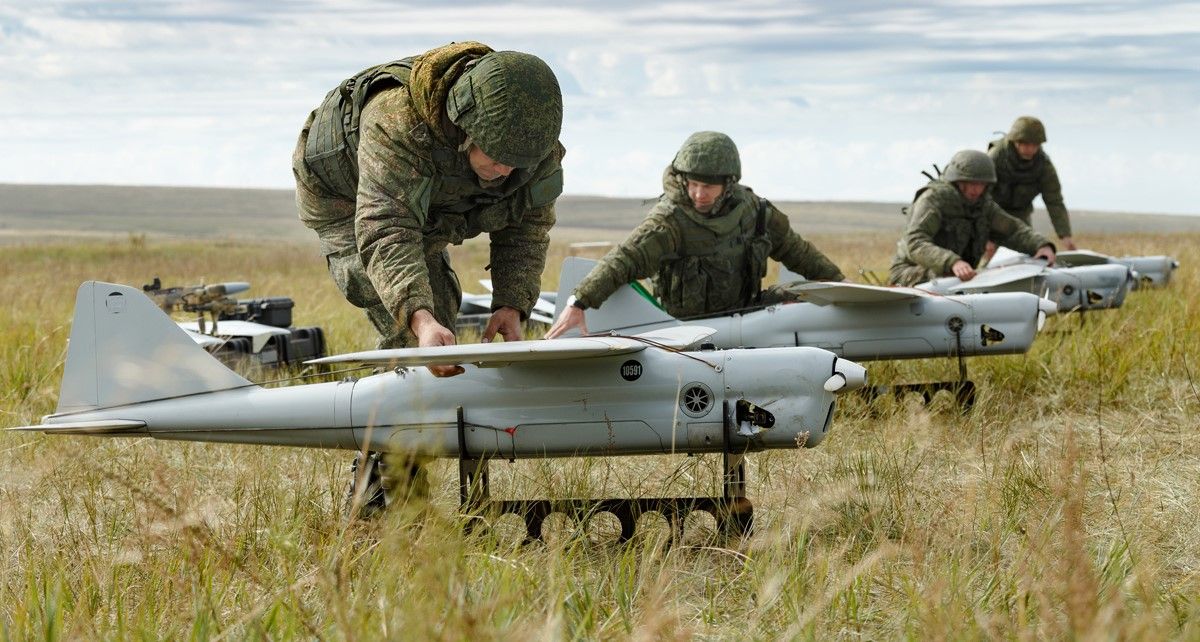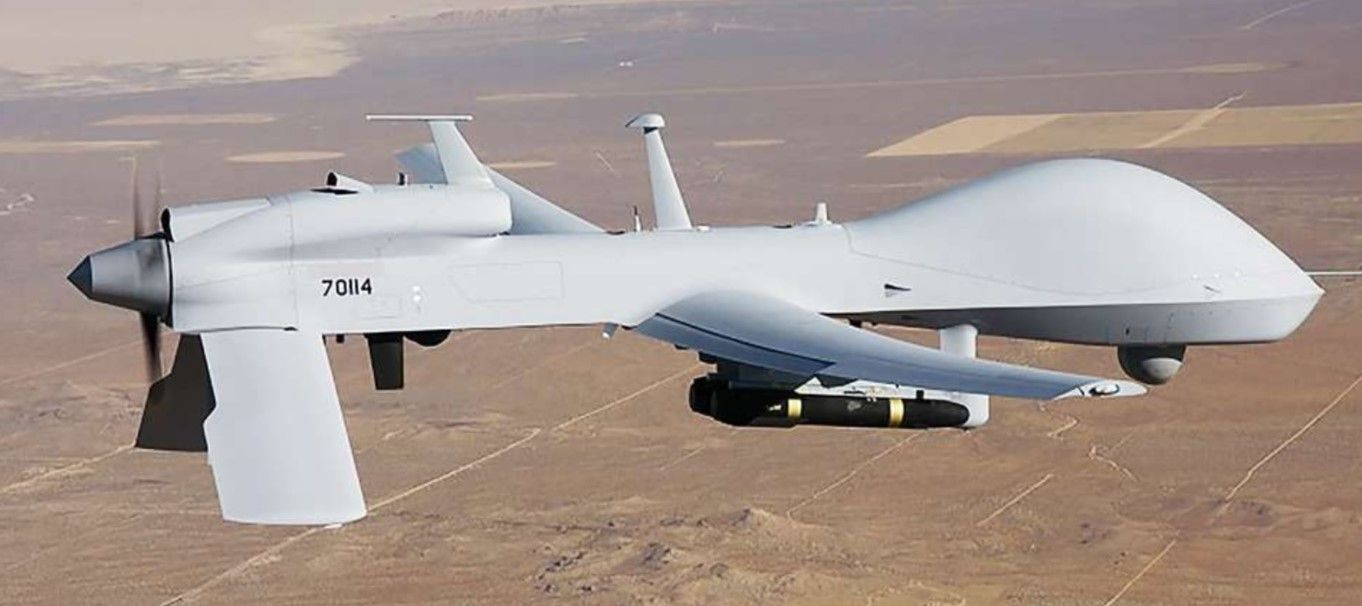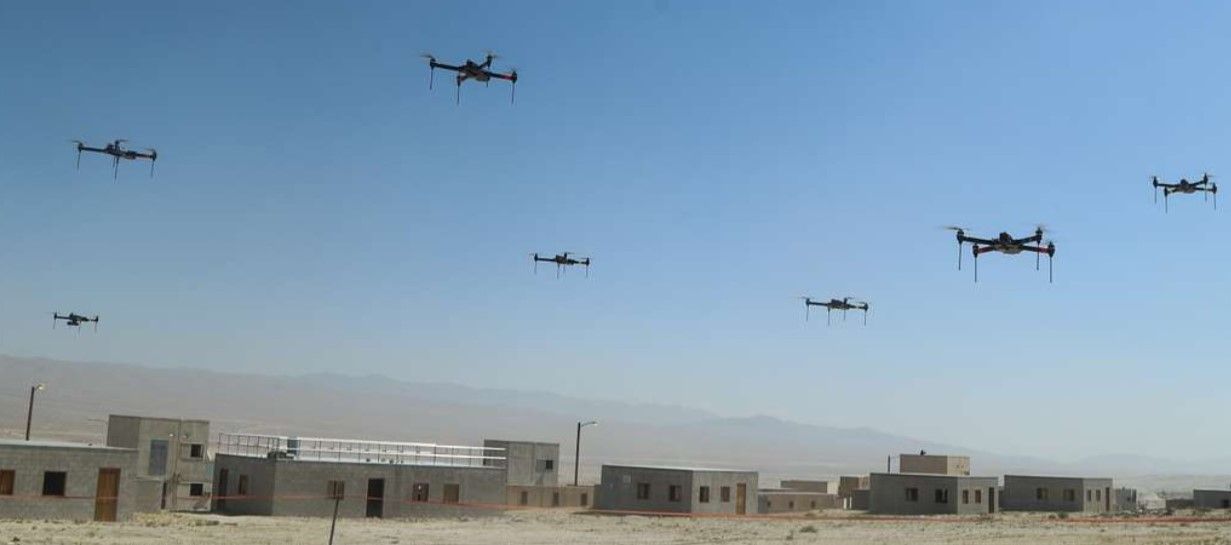The Dawn of the Drone Hunters
Along with new tactics for using uncrewed aircraft on the battlefield comes new weapons and technology for combating enemy drones.

The lightning-quick speed with which drones have become an essential part of military strategy in the war in Ukraine has made army chiefs and weapons developers sit up and ask, “How can we best negate the enemy’s use of drones?”
Current defences are largely based on conventional missiles or anti-aircraft weapons; however, the low price of many drones can make their use uneconomical. With conflicts in both Palestine and Ukraine, the price of ammunition has sky-rocketed, such that a single Stinger missile now has a $400,000 price tag. Using it to shoot down a $50,000 drone means accepting a loss, even if the target is hit.

The alternative to ‘hard strikes’ to combat drones is to use jamming weapons that disrupt or intercept the signals sent to remotely control them. These weapons come at a much lower cost and are reusable but require an operator to be near to the target drone. This often places them up close on the frontline where they themselves become a valuable target. If their location is known just before a drone is about to take off, killing the drone jammer becomes the primary goal.
To circumvent this challenge, weapons developers are increasingly focusing on anti-drone capabilities. For example, the US Military recently announced the purchase of Gray Eagle 25M drones fitted with a newly developed synthetic aperture radar.
Data sent by the manufacturer, General Atomics Aeronautical Systems, shows that the radar can, “… spot targets up to 50 miles away at high resolution, or up to 125 miles when conducting maritime surveillance.”
Tests have already proven how effective the sensors are, with Defense News reporting that, “The Eagle Eye was able to detect and track a small fixed-wing drone made out of balsa wood — much smaller than forces in the field would likely encounter from an enemy.” Also adding that, “An earlier test in late 2022 used the radar to shoot down a drone.”

“The proliferation [of small drones] in combat operations is growing exponentially,” explains Mike Shortsleeve, the manufacturer’s vice president. “[In the future] it’s going to be undeniable that [unmanned aerial systems] are going to be all over the battlespace, in any large-scale combat operations.”
Another US military development has been the use of airships or blimps to function as either loitering weapon systems, reconnaissance craft, or anti-drone platforms.
Currently, the US Army’s aging fleet of airships – known as aerostats – are mostly used as communication hubs, but with the sudden dominance of drones in Ukraine and their new-found use in terrorist attacks designers are looking to update them. As the industry journal C4isNet notes, “Future aerostats could carry autonomous capabilities — slashing costly logistics and staffing needs — or even counter-drone payloads.”

However, perhaps the most interesting advance in counter-drone technology is the development of directed-energy weapons.
Tests have already proven their effectiveness, and the low cost of each ‘shot’ in comparison to a missile is proving highly attractive to many national militaries.
In the UK, for example, field testing of the directed-energy weapon DragonFire was successfully able to take out a number of small drones, while in Israel, work is progressing on Iron Beam, a laser-based variant of the Iron Dome system.
However, like most military research projects, it is the Americans who are leading the way, with a recent Missile Defense Review noting the need for ‘non-kinetic’ options in light of changing threats.
“Directed energy shows great promise for the future,” said Laura DeSimone, an executive director at the US Missile Defense Agency. “I mean, there’s so many advantages of having a potential directed-energy engagement system — give the warfighter additional engagement opportunities, save interceptors, lower cost per engagement. So, lots of great potential for directed energy.”

A further alternative with excellent anti-drone capabilities is the use of microwaves. Like directed-energy, microwaves are a non-kinetic weapon but with the key advantage of being able to neutralise multiple targets at once. This could be a vital tool given the prospect of an enemy deploying swarms consisting of hundreds or thousands of smaller kamikaze drones.
The most advanced of these anti-drone weapons systems is the US’s Tactical High-power Operational Responder (THOR). As David Szondy, a military analyst at NewsAtlas explains, “THOR uses high-energy microwaves fired in bursts over wide areas to counter in-coming hostile drones. It doesn't do this by blasting the drones like a laser, but by frying the delicate electronics, causing the robotic aircraft to crash.”

Current technology has found the range of microwave weapons to be impractically short, which is why Lockheed Martin has developed the Mobile Radio Frequency-Integrated UAS Suppressor. Called MORFIUS for short, it is a fixed-wing, tube-launched drone that is able to fly close to small drones and attack them with high-powered microwave pulse.
Tests on individual smaller drones of classes 1, 2, and 3 have worked well, although the developmental team are hoping to further increase the weapon’s range or give it the capability to take out multiple targets.

Meanwhile in India, the Defence Research and Development Organisation (DRDO) is focusing on developing other next-generation counter-drone technologies.
One of its best-selling products is the Drone Detect, Deter and Destroy system or D4S - the Indian Army’s first indigenously developed anti-drone system.
D4S has the capability to detect and jam micro-drones at a distance of up to 3 km and can also neutralise a target with a laser at a range of up to 1.25 km.
In a noticeably short space of time, drones have been able to show their value in both civilian and military purposes. There are already more than two million hobby drones in the US alone and countless militaries are manufacturing or deploying them in both attack and defensive roles. Whether they are being used daily on the vast Ukrainian battlefront, as a tool for terrorism, or counter-terrorism surveillance, anti-drone technology and weapons are now a vital tool in both military and civilian defence systems.
As the number of drones continues to grow, the number of countermeasures will simply follow suit.
As one DRDO spokesperson put it, “Anti-drone technology is the hot topic.”
Photo credit: JeniKirbyhistory, Wikimedia, Garystockbridges, Gencraft, Wikimedia, Nara, & Flightglobal

